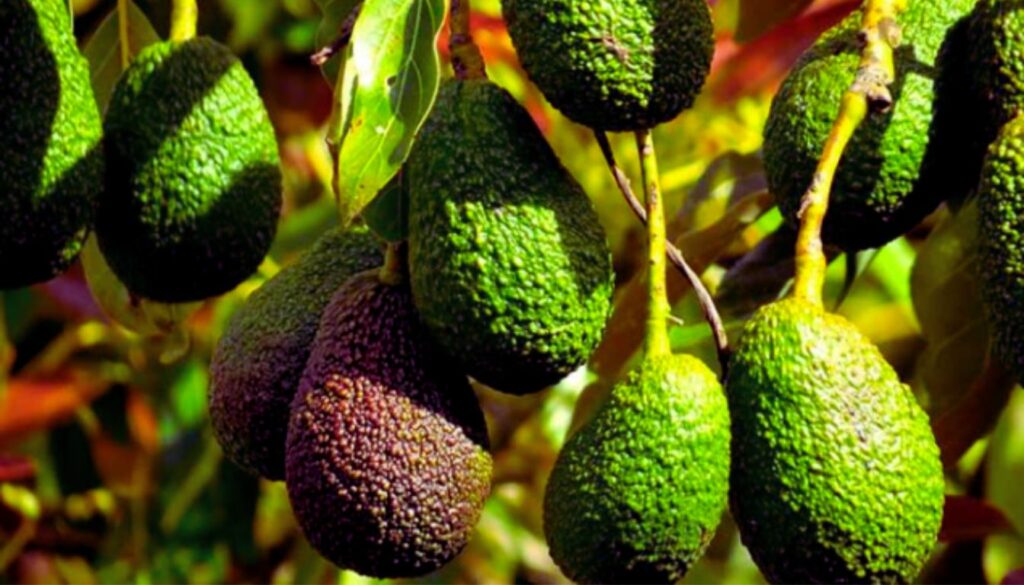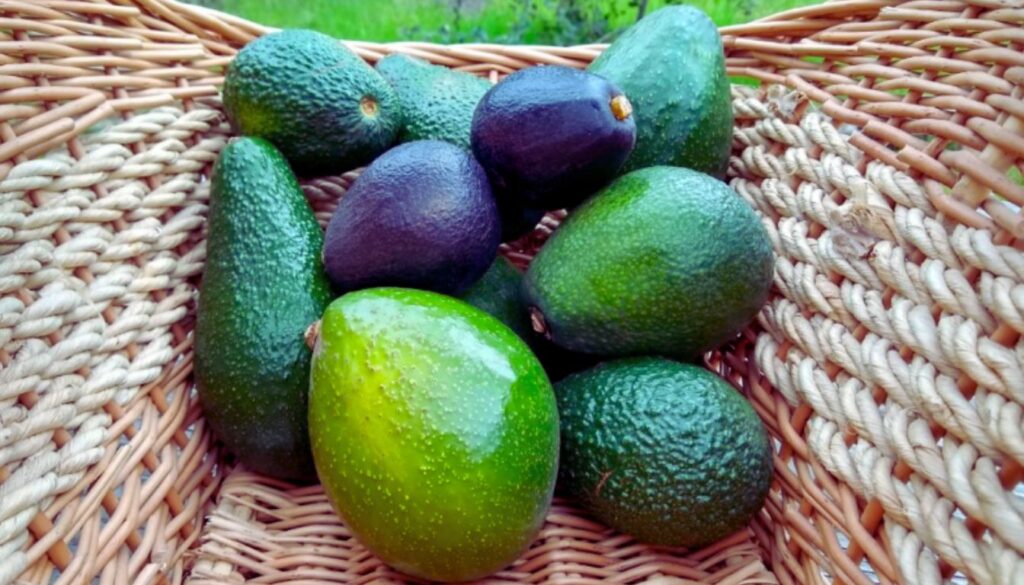If you’ve ever dreamt of growing your own avocados but worried about chilly weather, you’re not alone. Many enthusiasts share the same concern, but the good news is that cold-tolerant avocado varieties can thrive even in less-than-ideal climates. Imagine stepping into your backyard and picking fresh avocados, all while knowing you’ve chosen the right plants for your environment.
Understanding Cold Tolerance In Avocado
Cold tolerance in avocado plants refers to their ability to withstand lower temperatures without serious damage. Some varieties show more resilience than others, making them suitable for cooler climates.
What Is Cold Tolerance?
Cold tolerance describes a plant’s capacity to endure cold temperatures. For avocados, this means surviving temperatures as low as 30°F (-1°C) to 32°F (0°C). Each avocado variety has a different level of tolerance. Generally, the Mexican and Guatemalan types handle cold better than the typical Hass avocado. Small variances can make a big difference, so knowing your variety helps.
Importance Of Cold Tolerance In Avocado
Cold tolerance holds great importance for growers in cooler regions. When a plant tolerates cold well, it reduces the risk of frost damage. This means healthier trees and better fruit yields. For those of us trying to grow avocados in chillier areas, choosing a cold-tolerant variety increases our chances of success. Plus, who doesn’t want fresh guacamole on a chilly day? Embracing the right variety makes all the difference in safeguarding our beloved avocados.
Factors Affecting Cold Tolerance

Cold tolerance in avocados hinges on multiple factors. Understanding these elements helps me choose the best avocado varieties for my garden.
Variety Differences
Different avocado varieties show distinct cold tolerance levels. Mexican avocados, like ‘Mexicola’, often fare better in cold weather. Guatemalan varieties tend to be intermediate in their cold tolerance. The classic Hass avocado, while popular, struggles more in chilly conditions. I recommend selecting varieties known for their resilience to cold if I live in a cooler area. This choice minimizes frost damage and increases fruit production.
Environmental Conditions
Environmental factors significantly influence avocado growth. Temperature plays a key role; consistent temperatures below freezing can harm the trees. Soil quality also matters; well-drained soil prevents root rot in colder weather. I find that planting in protected areas, such as near walls or fences, can shield young trees from harsh winds. Additionally, using mulches adds insulation, helping to keep roots warm. Investing in protective covers during extreme cold snaps provides extra security.
Growing Techniques For Cold Tolerant Avocado
Growing cold-tolerant avocados requires attention to detail and a bit of strategy. Here’s how I approach it.
Site Selection
Choosing the right location makes a difference. I look for areas that receive full sun for at least six hours daily. Sites near south-facing walls capture heat from the sun, providing warmth even in cooler months. Windbreaks can also shield trees from chilly breezes. If possible, I avoid low-lying areas where cold air settles. A little elevation helps keep my avocados cozy.
Soil Preparation
Soil quality matters a lot for avocado health. I aim for well-draining soil rich in organic matter. Mixing compost into the soil boosts its nutrients and improves drainage. Avocado roots prefer slightly acidic to neutral pH, ideally between 6 and 7. I often test my soil to ensure it meets these needs. When planting, I create a mound or raised bed to enhance drainage and keep the roots happy.
Watering And Fertilization
Consistency in watering keeps my avocados thriving. I water deeply but infrequently, allowing the soil to dry out between sessions. This approach prevents root rot, which avocados dislike. During the growing season, I use a balanced fertilizer every six to eight weeks. This keeps the nutrient levels in check and encourages healthy growth. If my leaves start to yellow, I might add a bit more nitrogen. Avocados enjoy a bit of pampering.
Protecting Avocado Plants From Cold

Keeping avocado plants safe from cold is crucial for healthy growth. Protecting them during chilly weather ensures better fruit yields. Here are effective methods to shield your trees.
Mulching Methods
Mulching is a simple and effective way to insulate avocado roots. I recommend using organic materials like straw, wood chips, or leaves. Spread mulch 2 to 4 inches thick around the base of the tree. This layer preserves soil warmth and moisture, while also preventing weeds from taking over. Remember, avocado plants love a cozy environment, much like we do on a cold winter evening.
Using Frost Covers
Frost covers can be lifesavers on frosty nights. I use lightweight fabric or old sheets to drape over my avocado trees when temperatures drop. These covers trap heat close to the plant, protecting it from freezing temperatures. Make sure the cover doesn’t touch the leaves. It’s like giving them a warm blanket without the risk of giving them a chill! Remove the covers during the day to let the sun in and avoid overheating.
Before You Go – Cold Tolerance in Avocados
Growing avocados in colder climates is not just a dream; it’s an achievable goal. By selecting the right cold-tolerant varieties and implementing protective measures, I can cultivate healthy avocado trees that thrive despite the chill.
Understanding the unique needs of each variety helps me make informed choices, ensuring my plants withstand the cold. With the right site selection, soil preparation, and care, I can enjoy the satisfaction of harvesting fresh avocados right from my backyard.
So if you’re in a cooler region, don’t hesitate to give it a try. With a little effort and the right approach, you can bring the joy of avocado cultivation into your life, regardless of the temperature outside. Don’t forget to add The Herb Prof to your favorites so you don’t miss out on future articles.
References – Cold Tolerance in Avocados
Little Herb Encyclopedia, by Jack Ritchason; N.D., Woodland Publishing Incorporated, 1995
The Ultimate Healing System, Course Manual, Copyright 1985, Don Lepore
Planetary Herbology, Michael Tierra, C.A., N.D., Lotus Press, 1988
Handbook of Medicinal Herbs, by James A. Duke, Pub. CRP Second Edition 2007
The Complete Medicinal Herbal, by Penelope Ody, Published by Dorling Kindersley
Check the Following Articles
Almond Seeds: Nutrition, Culinary Uses, and Growing Tips
Turkey Tail Benefits: Immune Health & Gut Wellness Boost
Discover the Best Tea for High Blood Pressure
The Amazing Maitake Mushroom Benefits for Your Health
Frequently Asked Questions – Cold Tolerance in Avocados
Can I grow avocados in colder climates?
Yes, you can grow avocados in colder climates by selecting cold-tolerant varieties. These varieties can withstand lower temperatures without serious damage, allowing you to enjoy fresh avocados even in cooler regions.
What are cold-tolerant avocado varieties?
Cold-tolerant avocado varieties include Mexican types like ‘Mexicola’ and some Guatemalan varieties. These are generally more resilient to cold temperatures compared to the popular Hass avocado, which is less suited for cold climates.
How does cold tolerance in avocados work?
Cold tolerance in avocados refers to their ability to survive low temperatures without sustaining serious harm. Different avocado varieties have varying cold tolerance levels, affecting their suitability for cooler environments.
What factors affect the cold tolerance of avocado plants?
The cold tolerance of avocado plants is affected by the variety chosen, environmental conditions like temperature and soil quality, and proper care techniques. Selecting the right variety for your climate is essential for success.
How can I protect my avocado plants from cold weather?
To protect avocado plants from cold weather, mulch should be used for insulation, plants should be planted in sheltered areas, and covered with frost cloth or old sheets during particularly cold nights to help trap heat.
What should I consider when selecting a site for planting avocados?
Choose a site that receives full sun and is shielded from cold winds. Well-draining, nutrient-rich soil with a slightly acidic to neutral pH is also essential for healthy avocado growth.
How should I water and fertilize my avocado plants?
Water avocado plants deeply but infrequently to prevent root rot. Use balanced fertilizers to promote healthy growth, ensuring they are applied during the growing season for best results.
Why is soil quality important for avocado growth?
Soil quality is crucial because avocado trees prefer well-draining, nutrient-rich soil. Poor soil can lead to root rot and inadequate nutrient uptake, severely impacting plant health and fruit yield.
What mulch is best for avocado plants?
Organic materials like straw or wood chips are recommended for mulching avocado plants. These materials help insulate the roots, retain soil moisture, and maintain warmth during cold weather.
Can I grow Hass avocados in cold climates?
Hass avocados are generally not suitable for cold climates due to their lower cold tolerance. It’s better to choose Mexican or Guatemalan varieties for better resilience in chilly conditions.

